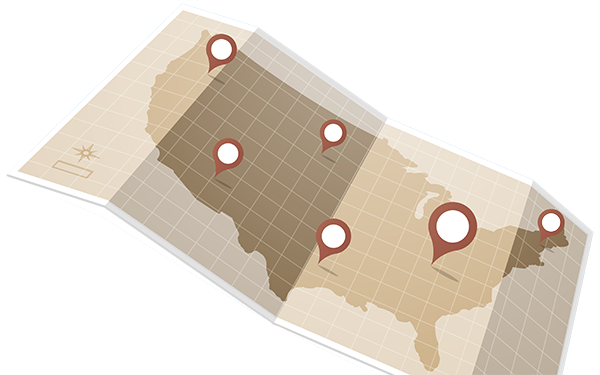Opinion: 5 Reasons Why Washington’s Arcane Charter Verdict Is Unlikely to Affect Other States

The Seventy Four reports on the Washington Supreme Court decision: Read our complete coverage
Have no doubt: Washington’s energetic charter school community will rebound from the state supreme court’s Sept. 4 decision that declared the entire program “unconstitutional.” In the weeks since, the 6-3 ruling has drawn bipartisan derision: Former Democratic governor Christine Gregoire called it “not right; not fair.” The same has been heard from a former justice who served as a Democratic state senator a former attorney general, as well as editorial boards across the state.
Angry parents have demonstrated to keep the schools open for their 1,300 newly-enrolled children. Late last week the Court extended the deadline for filing motions to reconsider until Oct. 23 – giving charter advocates time to strategize for a legislative remedy.
Yet the decision is emboldening anti-reformers elsewhere to assert that charters aren’t public and should be curbed and dismantled. Diane Ravitch and her Louisiana protégé Mercedes Schneider were first out of the gate, followed in lockstep by Washington Post blogger Valerie Strauss; Salon’s Jeff Bryant; and others. Connecticut attorney/columnist Wendy Lecker asked if the Nutmeg State’s courts should similarly step in to halt charter expansion there. An online weekly in Alabama disparaged that state’s new Washington-style charter commission, darkly alleging that it was actually designed by the right-wing American Legislative Exchange Council (ALEC).
But before Olympia Fever spreads further, policymakers in other states should understand just how limited, arcane, and exceptional the Washington decision is. Five reasons the decision is unlikely to be replicated in other states:
1 – The Decision Is About “Common Schools,” not “Public Schools”
The Washington Constitution says “The public school system shall include common schools, and such high schools, normal schools and technical schools as may hereafter be established.” “Common schools” are a component of public school system — not the whole thing. At the opening of its analysis the majority writes: “Whether charter schools would enhance our state’s public school system or appropriately address perceived shortcomings of that system are issues for the legislature and the voters.” (For a much deeper discussion of the common schools issue, see The Seventy Four’s recent analysis from Richard Whitmire and Andrew Rotherham)
2 – Most states don’t use Washington’s terminology
The phrase “common schools” came into usage in the 1840s, but today most states simply distinguish whether schools are public or private. A 2011 review of state constitutions found just 13 that refer to common schools, generally using that label to denote tuition-free schools open to all. Just one (CA) in any way ties them to the concept of a “district.”
High schools weren’t part of Washington's “common” domain in 1889; there were just three in the state when the constitution was approved. As their numbers grew, lawmakers simply incorporated them by reference with little fuss. An 1895 statute on State Board powers refers to high schools as a “department” of the common-school system. In 1903, the legislature formally consolidated school districts to support both grammar and high schools. (More on the history of Washington State’s public schools here.)
It’s mystifying that the current justices of this supposedly progressive state didn’t take the same evolutionary approach. Instead, they leaned heavily on a 1909 case, School District 23 v. Bryan, which defined “common schools” as “common to all children of proper age and capacity, free, and subject to and under the control of the qualified voters of the school district.” Former attorney general Rob McKenna noted in a radio interview that by relying on a calcified reading of Bryan, "[t]he court seems to have blown past the concept that [public] schools have steadily been changing over time." He added, “Even preschools are being embraced as common schooling.”
3 – It’s really all about the money
As my colleague Greg Richmond pointed out in a Seattle Times op-ed, “This is an accounting problem, not an educational problem. If the state paid for charter schools differently, there would be no issue.”
Here’s why the Washington court got stuck on a technicality other states have avoided. Like other Western territories, Washington established a “Permanent Common School Fund” to generate revenue from interest on sales of public lands. The state constitution dedicated these funds only to “common schools.”
The Court says that the state can’t spend common-school funds on charters — but because these funds are commingled with the state’s general fund, the state also can’t spend any general-fund revenues on them either. To reach this conclusion the Court had to ignore plain language in the 2015 state budget resolution that charter school funding “shall not include state common school levy revenues,” writing in a dismissive footnote that this language “does not assist the State.”
The Court’s wildly overbroad argument that all general funding is restricted by the intermingling of common-school funds could wind up defunding a range of popular non-charter programs – a prospect that promptly drove the incumbent attorney general, Rob Ferguson, to announce that he’ll file a motion to reconsider.
4 – No other state court has ever thrown out an entire charter law
Opponents have used a variety of legal arguments against charters in other states and with few exceptions, they’ve failed. Challenges over lack of local-voter control were defeated in Ohio, Michigan, Colorado and California. Charters aren’t a “diversion” of public school funds, courts found in Ohio and New Jersey. Only Georgia found that a portion of the charter system – its original state charter commission – violated the constitution. But that’s because unlike Washington and other states, Georgia vests authority over education not in the state legislature, but in local school districts. (The Commission was restored, by a sizeable margin, in a statewide referendum to amend the constitution.) Florida’s highest court also threw out the state-level Florida Schools of Excellence Commission on constitutional grounds – but neither Georgia nor Florida went so far as to try shutting down the entire charter school system.
The constitutions of 13 chartering states require an “efficient” or “uniform” system of public schools. The question of whether charters violate “uniformity” has been tested in three of them (California, Colorado, and Ohio), and the argument has been rejected each time since charters are subject to the same standards and graduation requirements as other public schools. (This may explain why the Washington majority skimmed over this argument in another footnote, saying the funding provisions alone were “dispositive.”)
Following the September 4 decision, Rutgers researcher Bruce Baker tweeted a provocative 2014 journal article he co-authored, contending that charters are “Having It Both Ways” – enjoying public status in statute but seeking to be treated as private entities to circumvent legal protections for students and staff. Yet the preponderance of the cases cited show that state courts have routinely upheld the public nature of charter schools with respect to funding, governance, and “uniformity.” The article’s few contrary examples involve NLRB and circuit-court decisions involving the more limited question of whether charters are public or private employers. Given their intentionally-hybrid nature as both public schools and nonprofit corporations, this question is likely to show up on other dockets.
5 – Public accountability isn’t the same as control by the local district
Unnoted by the court is an irony about the actual nature of voter control at the time Bryan was decided. According to the Washington Trust for Historic Preservation, in 1910 there were 2,710 school districts in the state and 2,888 school structures. In other words, there was a nearly one-to-one ratio of schools to districts, a pattern far more similar to today’s charter-school governance than to large public districts with scores of schools and a ward-based system for electing school boards.
But the 1909 Bryan decision and the September 4 ruling aren’t just about numbers. They propound a doctrine of “complete control” by voters in local school districts, ignoring the fact that education is a state responsibility and that democratic accountability is today accomplished through a variety of channels not contemplated in olden days. What would be the implications of applying Bryan-types rules to other states in the early 21st century? It would mean snatching public funding away from:
- All public schools in cities with mayor-led public school systems, including New York, Boston, Chicago, and Washington D.C.
- Magnet schools that enroll students across district boundaries
- State schools for students gifted in mathematics and science, as well as special state schools for disabled students
- Schools in state turnaround districts such as the Tennessee Achievement School District
- Non-district based choices such as Minnesota’s Postsecondary Options program
- Alternative education campuses (AECs) that serve multi-district regions
- Public schools that have any form of independent governance, such as DC’s Duke Ellington School of the Arts
- Online courses with statewide enrollment
- Courses provided on contract by regional educational service districts operated by the state education department
The list could go on. Fortunately, legislators and jurists in other states have taken a far more expansive and realistic approach to governance and accountability than their colleagues in Olympia.
As former Justice Talmadge writes: “Public charter schools are as constitutional in Washington as in the other 41 states that approved them in the prior 20 years. It would be a shame if the 1,300 students and their families (mostly low-income and communities of color) have this public education option taken away from them because the court imposed a restrictive definition upon an educational program.”
That message should be heard loud and clear across all states that have embraced charter schools.
Read our complete coverage of the Washington Supreme Court case
Get stories like these delivered straight to your inbox. Sign up for The 74 Newsletter

;)
